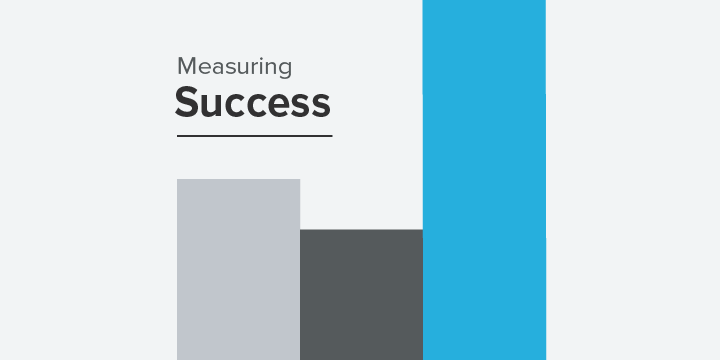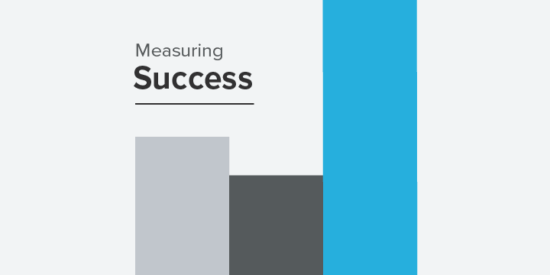How do you define success for your law firm? Is it by growing profits, finding a better work-life balance, or something else?
More importantly, how do you make decisions to ensure your practice reaches its goals? You might have a clear idea of what you want, but if you’re not making informed decisions to get there or measuring your progress, it’s impossible to know how well your firm is truly doing.
Below, we’ll discuss three key performance indicators (KPIs) for law firms covered in Clio’s recently released Legal Trends Report:
- Utilization rate (billable hours as a proportion of total hours worked)
- Realization rate (hours billed to a client as a proportion of billable hours worked)
- Collection rate (hours for which payment gets collected as a proportion of hours billed)
We’ll also share a few tips on how to improve these rates, as improving them can make a big difference in your firm’s overall profitability.
About the Legal Trends Report
The Legal Trends Report draws on aggregate and anonymized data from tens of thousands active Clio users to create an accurate snapshot of legal industry trends impacting small-to-medium-sized firms.
This is key, because this is the first time solo and small firm lawyers have received access to unbiased data about their practices. Previous reports on this segment of the legal industry (which, at 80 percent of the total U.S. legal market, is the largest segment by a long shot) have been based on survey responses with small sample sizes. Not only do small samples result in less reliable data, but self-reported information is subject to inherent personal bias.
Utilization Rate
According to the 2019 Legal Trends Report, the average utilization rate for lawyers in the United States in 2018 was just 31 percent. In other words, lawyers bill just 2.5 hours per day—and that figure is calculated on an estimated eight-hour workday.
By comparison, small firm lawyers surveyed for Thomson Reuters’ State of U.S. Small Law Firms Study Report said they spend 61 percent of their time practicing law, while solos surveyed said they spend 55 percent of their time on legal work. In the 2012 LexisNexis Billable Hours Survey Report (based on information from 500 respondents), solo and small firm lawyers said that they worked an average of 8.9 hours per day and billed an average of 6.9 hours.
Even considering that the utilization rate could be higher for individual lawyers who work part time, and that this metric does not include lawyers who billed using flat fees, lawyers clearly bill much less than they think they do.
You may like these posts
Tips for Improving Utilization Rate
The Legal Trends Report shows that utilization rate scales with firm size, so adding more lawyers to your firm could help improve efficiency. Solo law firms have it the hardest with a utilization rate just 22 percent, less than half that of mid-sized firms of 12 lawyers.
Therefore, if you’re swamped with work, but are worried you can’t afford to hire an associate—do it. According to the survey, they will help increase your billable hours overall. That said, it’s worth noting that there is a plateau for firms with five to nine lawyers, so this tip might not work for you if adding an extra lawyer keeps you in that range.
A few other tips:
- Track your firm’s utilization rate. As the saying goes, what gets measured gets managed. Tracking all of your time worked—billable and non-billable—will give you a clear picture of how you’re spending your days. To do this, you can use Clio Manage’s Firm Dashboard to show and track your firm’s utilization rate (as well as realization and collection rates) at a glance.
- Use staff. Don’t spend time on administrative tasks that you could be paying a receptionist, paralegal, or legal assistant to do, especially when you could be spending your time on billable work. If you think you can’t afford to hire staff, do the math, and consider how many billable hours you’re losing to administrative tasks. And if you really can’t hire anyone, there are more affordable solutions available, such as Ruby Receptionist.
- Use practice management software. With the rise of cloud-based legal practice management software, there are plenty of options out there, many of which have incredibly helpful functions that can save you time spent on non-billable tasks. Case in point: Clio saves users an average of eight hours per week. And with monthly subscription models, cloud-based legal practice management software demands a low upfront investment (i.e., there’s no reason you shouldn’t be trying one out right now).
Realization Rate
The average utilization rate in the U.S. was shockingly low for 2015, but the realization rate was much better, coming in at 81 percent. Still, that means lawyers are writing off $19 for every $100 of billable work conducted, and when the proportion of billable hours in your working day are low to begin with, every dollar counts.
Tips for Improving Realization Rate
Don’t succumb to pressures to discount your rates. Lawyers are sometimes pressured to discount fees for legal services, and indeed, there may be situations where this is appropriate. However, as with every business, sometimes you simply need to tell potential clients what you’re worth.
Set your rate firmly. Don’t negotiate if someone points out that a competitor charges less, and definitely don’t indicate you’re willing to cut fees right off the bat.
Collection rate
Just as lawyers bill fewer hours than they work, they collect on fewer hours than they bill. The collection rate for 2015 was 86 percent. It’s the most positive of the three law firm KPIs, but it still cuts down the time lawyers are actually getting paid for.
Tips for Improving Collection Rate
To spend less non-billable time chasing down payments, try accepting credit card payments online. With Clio Payments, you can bill clients via email and get paid instantly. The Legal Trends Report states that law firms who used Clio Payments got paid 35 percent faster than law firms who used check-based payments.
There are ethical considerations that come with accepting credit cards, but legal-specific credit card processors ensure compliance with all relevant requirements.
Conclusions
It’s clear that lawyers need to spend more time on billable work and less time on administrative tasks. Improving your realization and collection rates might help your firm’s bottom line, but those rates are already fairly favorable—you’ll likely get a better return on investment on effort spent on improving your utilization rate.
One of the most important things to do is to start using a legal practice management solution, if you’re not using one already.
Here’s why: As mentioned above, Clio users say the software saves them an average of eight hours a week, and the the Legal Trends Report shows that the average billable hourly rate in the United States is $232 per hour. If Clio users spend four hours of that extra time leaving early from work, picking up the kids, and generally improving their work-life balance, that leaves another four hours with which to earn an extra $928 in billable hours per week. Correct for the 81 percent realization rate and the 86 percent collection rate, and lawyers who use Clio could be making approximately $650 more per week than those who don’t.
How much does Clio cost in comparison? Our Essentials plan, billed annually, costs just $17.25 per week.
One final consideration: As a number of legal bloggers and writers have suggested since the release of the Legal Trends Report, the answer may not be to increase billable hours, but to look at different billing models. Of course, many lawyers have long maligned the billable hour, and many others are already using flat fees and other models for certain legal services, so the conversation around alternative billing structures is nothing new. However, the data from the Legal Trends Report does give the issue a heightened sense of urgency.
Either way, solo and small firm lawyers are no longer shooting in the dark when it comes to measuring success and making key business decisions—the Legal Trends Report provides them with the key data they need.
We published this blog post in October 2016. Last updated: .
Categorized in: Business









